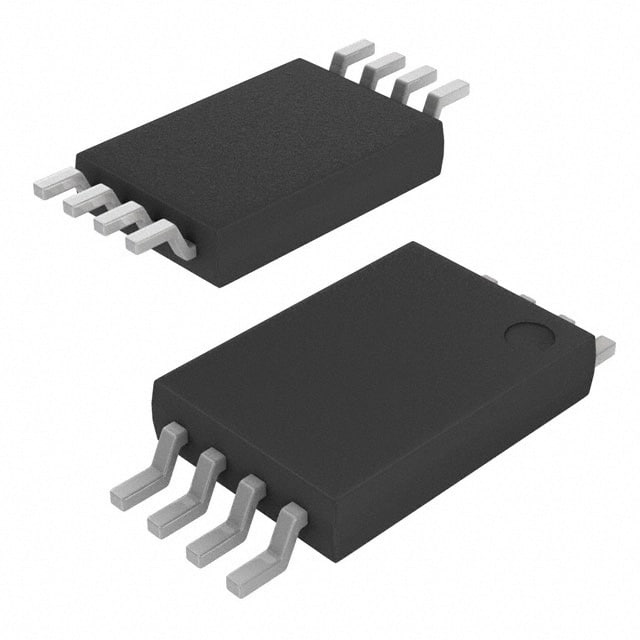Viz Specifikace pro podrobnosti o produktu.

MAX11960ETJ+ - Product Overview
Basic Information
- Category: Integrated Circuits (ICs)
- Use: Analog-to-Digital Converter (ADC)
- Characteristics: High-speed, Low-power, 16-bit resolution
- Package: 32-TQFN (5x5)
- Essence: Converts analog signals into digital data
- Packaging/Quantity: Tape & Reel (2500 pieces per reel)
Specifications
- Resolution: 16 bits
- Sampling Rate: Up to 160 MSPS (Mega Samples Per Second)
- Power Supply Voltage: 1.8V to 3.6V
- Input Voltage Range: 0V to VREF
- Operating Temperature Range: -40°C to +85°C
Detailed Pin Configuration
The MAX11960ETJ+ has a total of 32 pins. The pin configuration is as follows:
- REFOUT
- VREF
- AGND
- VIN-
- VIN+
- VCM
- VDD
- DVDD
- DGND
- CLKIN
- CLKOUT
- PDWN
- RESET
- CSB
- SCLK
- SDATA
- D0
- D1
- D2
- D3
- D4
- D5
- D6
- D7
- D8
- D9
- D10
- D11
- D12
- D13
- D14
- D15
Functional Features
- High-speed ADC with 16-bit resolution
- Low power consumption for energy-efficient applications
- Wide input voltage range allows for versatile signal conversion
- Internal reference voltage generation (VREF)
- Clock input and output for synchronization with other devices
- Power-down mode (PDWN) for power-saving operation
- Reset function (RESET) for initialization
- Serial interface for easy communication with microcontrollers
Advantages and Disadvantages
Advantages: - High-resolution conversion for accurate signal processing - Fast sampling rate enables real-time data acquisition - Low power consumption extends battery life in portable devices - Compact package size for space-constrained applications - Versatile input voltage range accommodates various signal levels
Disadvantages: - Limited to 16-bit resolution, may not be suitable for ultra-high precision applications - Requires external clock source for proper operation - Sensitive to noise and interference, may require additional shielding or filtering
Working Principles
The MAX11960ETJ+ is an analog-to-digital converter that converts continuous analog signals into discrete digital data. It utilizes a high-speed sampling technique to capture the input signal and quantizes it into 16-bit binary code. The converted digital data can then be processed by a microcontroller or digital signal processor for further analysis or storage.
The device operates by comparing the input voltage against a reference voltage (VREF) and generating a digital representation of the input signal based on the comparison result. The internal circuitry of the ADC includes a sample-and-hold amplifier, a voltage comparator, and a successive approximation register (SAR) for accurate conversion.
Detailed Application Field Plans
The MAX11960ETJ+ is commonly used in various applications that require high-speed and high-resolution analog-to-digital conversion. Some potential application fields include:
- Communications: Used in wireless base stations, software-defined radios, and broadband modems for signal processing and data transmission.
- Test and Measurement: Employed in oscilloscopes, spectrum analyzers, and data acquisition systems for precise signal analysis and measurement.
- Medical Imaging: Integrated into medical imaging equipment such as ultrasound machines and MRI scanners to convert analog signals from sensors or transducers.
- Industrial Automation: Utilized in industrial control systems, robotics, and process monitoring for accurate data acquisition and control.
- Audio and Video Processing: Incorporated in professional audio equipment, video cameras, and digital video recorders for high-fidelity signal conversion.
Detailed and Complete Alternative Models
- MAX11902ETC+: 12-bit, 500 MSPS ADC with similar features and package.
- MAX11921ETG+: 14-bit, 250 MSPS ADC with lower power consumption.
- MAX11940ETG+: 18-bit, 100 MSPS ADC with higher resolution.
- MAX11961ETJ+: 16-bit, 320 MSPS ADC with extended temperature range.
These alternative models offer different specifications and performance characteristics, allowing users to choose the most suitable ADC for their specific application requirements.
In conclusion, the MAX11960ETJ+ is a high-speed, low-power 16-bit ADC that provides accurate analog-to-digital conversion. With its versatile input voltage range and
Seznam 10 běžných otázek a odpovědí souvisejících s aplikací MAX11960ETJ+ v technických řešeních
Question: What is the MAX11960ETJ+?
Answer: The MAX11960ETJ+ is a high-speed, 16-bit analog-to-digital converter (ADC) designed for use in various technical solutions.Question: What is the maximum sampling rate of the MAX11960ETJ+?
Answer: The MAX11960ETJ+ has a maximum sampling rate of 500 mega-samples per second (MSPS).Question: What is the resolution of the MAX11960ETJ+?
Answer: The MAX11960ETJ+ has a resolution of 16 bits, allowing for high-precision conversion of analog signals.Question: What is the input voltage range of the MAX11960ETJ+?
Answer: The MAX11960ETJ+ has a differential input voltage range of -0.5V to +0.5V, making it suitable for a wide range of applications.Question: Does the MAX11960ETJ+ support multiple power supply options?
Answer: Yes, the MAX11960ETJ+ supports both single-supply and dual-supply operation, providing flexibility in system design.Question: Can the MAX11960ETJ+ be used in low-power applications?
Answer: Yes, the MAX11960ETJ+ features a power-down mode that reduces power consumption when the ADC is not actively converting.Question: What is the interface of the MAX11960ETJ+?
Answer: The MAX11960ETJ+ uses a parallel LVDS (Low-Voltage Differential Signaling) interface for high-speed data transfer.Question: Is the MAX11960ETJ+ compatible with other digital signal processing (DSP) devices?
Answer: Yes, the MAX11960ETJ+ is compatible with a wide range of DSP devices, making it easy to integrate into existing systems.Question: Does the MAX11960ETJ+ provide any built-in features for signal conditioning?
Answer: Yes, the MAX11960ETJ+ includes a programmable digital filter and a gain amplifier to enhance signal quality and accuracy.Question: What are some typical applications of the MAX11960ETJ+?
Answer: The MAX11960ETJ+ is commonly used in areas such as communications, medical imaging, test and measurement equipment, and industrial automation, among others.

